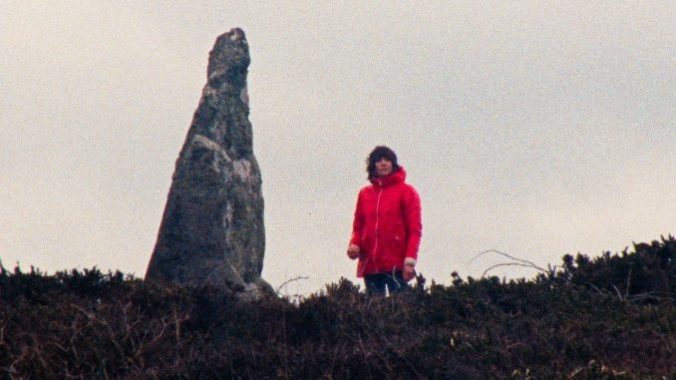Enys Men‘s Abstract, Dawdling British Folk Horror Is Weak Tea

Rural American horror is supplied with murderous hillbillies, ready to exact economic revenge on vacationing yuppies, and foreboding log cabins, haunted by the sins of Manifest Destiny. These are our tangible anxieties, out there in the country. Drive a farm-to-market road long enough and you’re liable to see plenty of dilapidated barns surrounded by empty fields, and shacks, not yet Airbnb’d, hidden amongst the hills. At their furthest, our cultural memories barely extend back enough to conjure up that tired guilt-ridden colonial trope, the Native American burial site. Older countries have a different scale for the kind of ancestral fears they can still reach out and touch. But the lingering presence of history is often a desperately discovered explanation for the horrors, rather than the single mesmerizing element of the ghost story. Enys Men (revealing a bit of its magic when its Cornish title is translated to “stone island”) is do-it-all filmmaker Mark Jenkin’s dawdling attempt to change this, but his non-narrative folk horror is so enraptured with its own images that it forgets to cast its spell over us.
And why shouldn’t Jenkin enjoy what he’s shot? Enys Men’s retro creation is an isolated exhibit of anachronistic technologies and techniques. The 16mm film grain, orange-red light leaks, frozen frames, slo-mo and flare-fade transitions—Enys Men’s ‘70s setting and ‘70s subgenre are meticulously reflected in its aesthetic. When Mary Woodvine’s unnamed middle-aged environmentalist conducts observations on her lonely island, recording the daily soil temperature near some odd flowers, her delicate routine is second to its place in time. Jenkin’s camera is typically so static that its occasional slow pans and zooms give the sense of another presence, but the moves are less unsettling than conspicuously throwback. We’re sure she’s alone; the brief visits from dancing girls, a solemn priest and other residents of The Busy, Busy World of Richard Not-So-Scary only confirm as much.
The woman continues her daily pattern, her bright red symbols of civilization (a gas generator, a shiny plastic raincoat, the laces of hiking boots) blistering on the green-brown face of the rocky island. She moves from the flowers, past a decrepit stone tower, to a well, into which she drops rocks (“Listen closely for the splash!” this set-up screams at us). She eyes a stone menhir suspiciously; standing alone on the island and evoking thoughts of paganism, the monolith is more Wicker Man than 2001. She then goes to her modest home, where she records her findings in a notebook. “No change,” she writes.
I find abstraction most effective when it’s so broad and expressionistic that our feelings can’t help but overtake the logical parts of our mind. But Enys Men’s experiment pushes an advancing, clarifying logic—even if it’s mostly free from narrative—so that your movie brain (or perhaps your puzzle-game brain, for those more used to navigating mysterious abandoned islands that way) starts hunting for the very changes Woodvine’s character ignores. It notices them just as quickly.
Jenkin returns us to the same images so often that even our lizard brains start playing Spot the Difference. Was there that much moss on that rock before? Are those flowers moving with the wind, or against it?
-

-

-

-

-

-

-

-

-

-

-

-

-

-

-

-

-

-

-

-

-

-

-

-

-

-

-

-

-

-

-

-

-

-

-

-

-

-

-

-








































